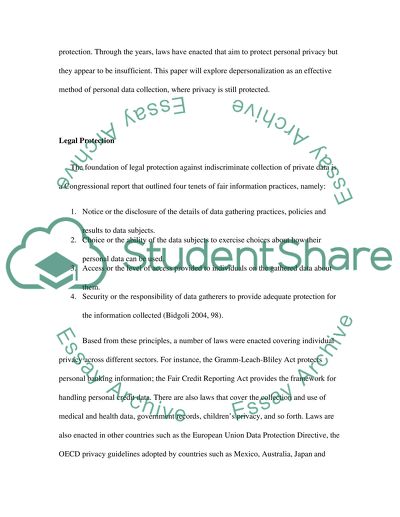Cite this document
(“Depersonalization as a method of representation and protection of Research Paper”, n.d.)
Depersonalization as a method of representation and protection of Research Paper. Retrieved from https://studentshare.org/information-technology/1477603-depersonalization-as-a-method-of-representation
Depersonalization as a method of representation and protection of Research Paper. Retrieved from https://studentshare.org/information-technology/1477603-depersonalization-as-a-method-of-representation
(Depersonalization As a Method of Representation and Protection of Research Paper)
Depersonalization As a Method of Representation and Protection of Research Paper. https://studentshare.org/information-technology/1477603-depersonalization-as-a-method-of-representation.
Depersonalization As a Method of Representation and Protection of Research Paper. https://studentshare.org/information-technology/1477603-depersonalization-as-a-method-of-representation.
“Depersonalization As a Method of Representation and Protection of Research Paper”, n.d. https://studentshare.org/information-technology/1477603-depersonalization-as-a-method-of-representation.


